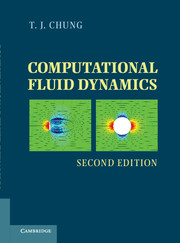Book contents
- Frontmatter
- Contents
- Preface to the First Edition
- Preface to the Revised Second Edition
- Part One Preliminaries
- Part Two Finite Difference Methods
- Part Three Finite Element Methods
- Part Four Automatic Grid Generation, Adaptive Methods, and Computing Techniques
- Chapter Seventeen Structured Grid Generation
- Chapter Eighteen Unstructured Grid Generation
- Chapter Nineteen Adaptive Methods
- Chapter Twenty Computing Techniques
- Part Five Applications
- Appendixes
- Index
- References
Chapter Eighteen - Unstructured Grid Generation
from Part Four - Automatic Grid Generation, Adaptive Methods, and Computing Techniques
Published online by Cambridge University Press: 05 June 2012
- Frontmatter
- Contents
- Preface to the First Edition
- Preface to the Revised Second Edition
- Part One Preliminaries
- Part Two Finite Difference Methods
- Part Three Finite Element Methods
- Part Four Automatic Grid Generation, Adaptive Methods, and Computing Techniques
- Chapter Seventeen Structured Grid Generation
- Chapter Eighteen Unstructured Grid Generation
- Chapter Nineteen Adaptive Methods
- Chapter Twenty Computing Techniques
- Part Five Applications
- Appendixes
- Index
- References
Summary
The structured grid generation presented in Chapter 17 is restricted to those cases where the physical domain can be transformed into a computational domain through one-to-one mapping. For irregular geometries, however, such mapping processes may become either inconvenient or impossible to apply. In these cases, the structured grid generation methods are abandoned and we turn to unstructured grids where transformation into the computational domain from the physical domain is not required. Even for the regular geometries, an unstructured grid generation may be preferred for the purpose of adaptive meshing in which the structured grids initially constructed become unstructured as adaptive refinements are carried out.
Finite volume and finite element methods can be applied to unstructured grids. This is because the governing equations in these methods are written in integral form and numerical integration can be carried out directly on the unstructured grid domain in which no coordinate transformation is required. This is contrary to the finite difference methods in which structured grids must be used.
Information
- Type
- Chapter
- Information
- Computational Fluid Dynamics , pp. 591 - 616Publisher: Cambridge University PressPrint publication year: 2010
